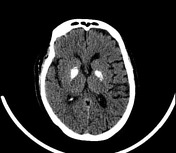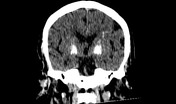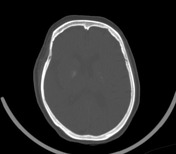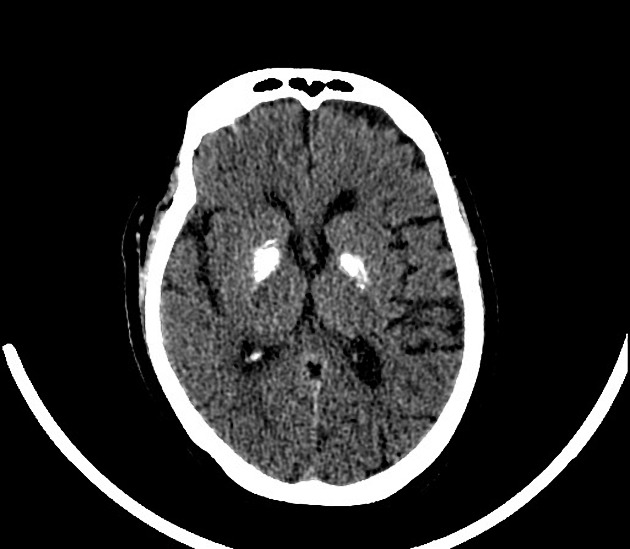Presentation
History of diabetes, hypertension, chronic hearing loss, and dementia.
Patient Data







There are symmetric bilateral calcifications in the corona radiata and globus pallidus, as well as cerebellar dentate nuclei, compatible with Fahr syndrome. Incidentally, there is also a rounded soft tissue density in left nasal cavity, compatible with a nasal polyp.
Case Discussion
Fahr syndrome is a rare condition characterized by abnormal calcium deposits in the basal ganglia, thalamus, cerebellar dentate nuclei, and subcortical white matter, especially noted in older patients. These calcium deposits consist of calcium carbonate and calcium phosphate.
There are many possible etiologies of Fahr syndrome. Its primary form, Fahr disease, is most commonly transmitted as an autosomal dominant trait, but it may also be inherited as an autosomal recessive trait or it may occur sporadically. Fahr syndrome, which generally refers to secondary causes, has been associated with a large number of conditions, most common of which are endocrinopathies, mitochondrial disorders, and infectious diseases. In all cases of suspected Fahr syndrome, additional tests should be performed to investigate for a potential secondary cause, and exclude other differential diagnoses.




 Unable to process the form. Check for errors and try again.
Unable to process the form. Check for errors and try again.